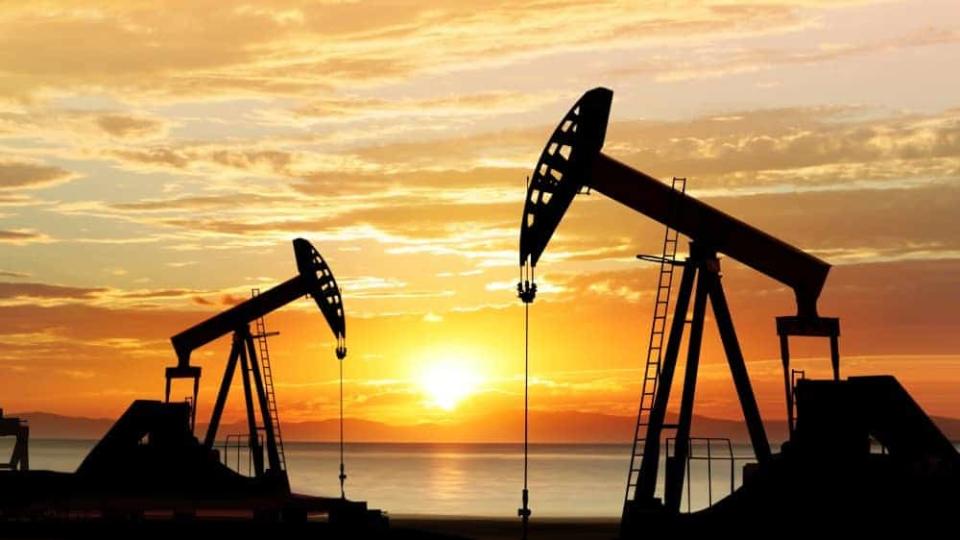Investors: Why the U.S. Election Might Be Excellent News for Your Energy Stocks

Canada’s energy sector is just about due for some major good news. That’s what beleaguered oil and gas investors keep telling themselves, anyway.
It’s been pretty much non-stop negativity for the sector ever since late 2014, when the price of crude first slipped under $100 per barrel. The price kept falling before bottoming in the $30-per-barrel range, eventually recovering a tiny bit. This prolonged weakness caused countless bankruptcies, with many other energy producers desperately hanging on for dear life, barely staying ahead of their debt obligations.
The industry could really use some relief, which could come in November after the United States has their presidential election. Here’s why that event could be a very big deal for the energy sector.
An overview of the energy market
As much as some folks in Alberta want to blame oil’s troubles on certain politicians, I see it to be a pretty simple problem. The reason the price of crude is so depressed has everything to do with supply and demand.
Back in 2010, the United States produced around six million barrels of oil each day. These days, the United States produces about double that, or around 12 million barrels per day. Canadian oil production has also increased during that time from approximately 2.5 million barrels per day to more than four million barrels per day.
This means that from 2010 to 2019, total North American energy production increased from 8.5 million barrels of oil per day to 16 million barrels of oil per day. With limited ways to export crude, it’s little wonder why North American oil prices got chopped in half.
The increase in Canadian production was almost solely from large oil sands projects coming online. Conventional oil production has been stuck around 1.5 million barrels per day for more than a decade. But the United States doesn’t have any large-scale production like the oil sands. Just about all of its new production comes from fracking, a controversial oil extraction technique that uses pressurized liquid to extract oil and natural gas trapped in shale rock.
Opponents to fracking say the process makes the earth unstable, leading to earthquakes. Some also say fracking is responsible for putting oil and natural gas into groundwater sources, which contaminates water we use for drinking and farming. In fact, a recent poll said a majority of Americans are opposed to fracking and want to see it banned.
This is where the U.S. election comes in. If Bernie Sanders wins the Democratic Party nomination, he has pledged to end fracking. If such a move takes place, it’s pretty easy to see the impact it would have on the market. It would shoot oil prices higher immediately and would likely encourage more innovation in the green energy space. After all, there isn’t much that motivates the market more than higher prices.
How you can play this
The companies best positioned to benefit from a fracking ban are Canada’s top energy producers, companies that have the bulk of their production come from the oil sands.
Suncor Energy (TSX:SU)(NYSE:SU) is one of Canada’s top oil producers. Between its oil sands assets, its conventional oil assets, and its offshore oil assets in Newfoundland, the company produces about 800,000 barrels of oil each day. That makes it Canada’s second-largest oil producer.
The company also boasts extensive downstream operations. It owns three refineries in Canada and one in the United States, which have a combined capacity of around 500,000 barrels of oil per day. It then delivers these finished products to its fleet of nearly 1,800 Petro-Canada gas stations. This part of Suncor’s business delivers steady results no matter what the underlying commodity price does.
Suncor is also strong enough its balance sheet can withstand any additional short-term pressure. It has a large cash position and generates ample cash flow — cash that’s put back to work buying back shares and paying a generous dividend. After a recent dividend increase, the stock now yields 4.5%.
The bottom line
A Bernie Sanders victory is hardly guaranteed. First, he must beat the rest of the Democrat challengers and then Donald Trump in the election. But if he can win, it should be great news for Canada’s largest oil stocks.
More reading
Can You Retire Comfortably on Only the CPP Pension and OAS Payments?
Canada Revenue Agency: Avoid the CRA Taxing Your New 2020 $6,000 TFSA
Fool contributor Nelson Smith owns shares of SUNCOR ENERGY INC.
The Motley Fool’s purpose is to help the world invest, better. Click here now for your free subscription to Take Stock, The Motley Fool Canada’s free investing newsletter. Packed with stock ideas and investing advice, it is essential reading for anyone looking to build and grow their wealth in the years ahead. Motley Fool Canada 2020

 Yahoo Finance
Yahoo Finance 